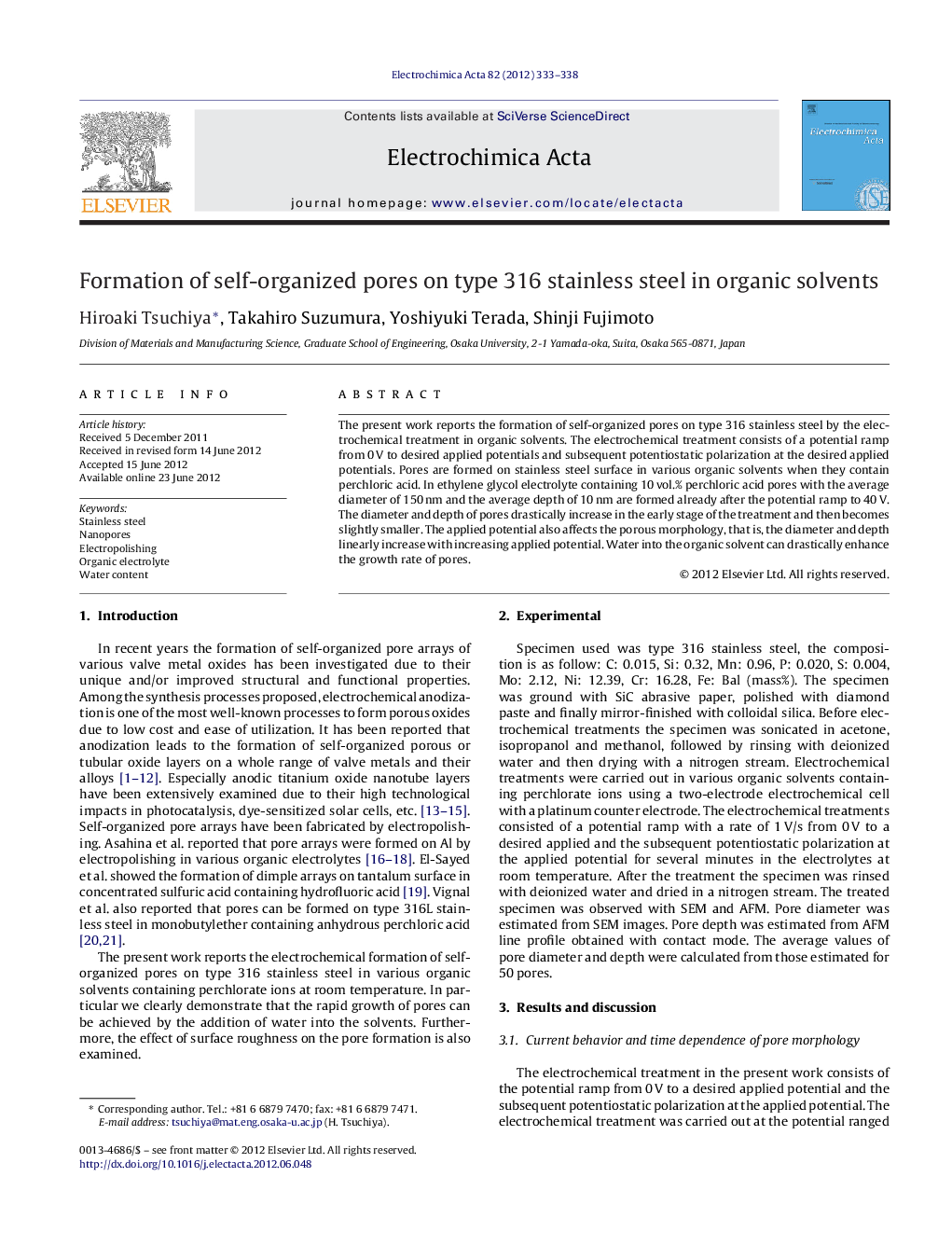| Article ID | Journal | Published Year | Pages | File Type |
|---|---|---|---|---|
| 6618339 | Electrochimica Acta | 2012 | 6 Pages |
Abstract
The present work reports the formation of self-organized pores on type 316 stainless steel by the electrochemical treatment in organic solvents. The electrochemical treatment consists of a potential ramp from 0Â V to desired applied potentials and subsequent potentiostatic polarization at the desired applied potentials. Pores are formed on stainless steel surface in various organic solvents when they contain perchloric acid. In ethylene glycol electrolyte containing 10Â vol.% perchloric acid pores with the average diameter of 150Â nm and the average depth of 10Â nm are formed already after the potential ramp to 40Â V. The diameter and depth of pores drastically increase in the early stage of the treatment and then becomes slightly smaller. The applied potential also affects the porous morphology, that is, the diameter and depth linearly increase with increasing applied potential. Water into the organic solvent can drastically enhance the growth rate of pores.
Related Topics
Physical Sciences and Engineering
Chemical Engineering
Chemical Engineering (General)
Authors
Hiroaki Tsuchiya, Takahiro Suzumura, Yoshiyuki Terada, Shinji Fujimoto,
